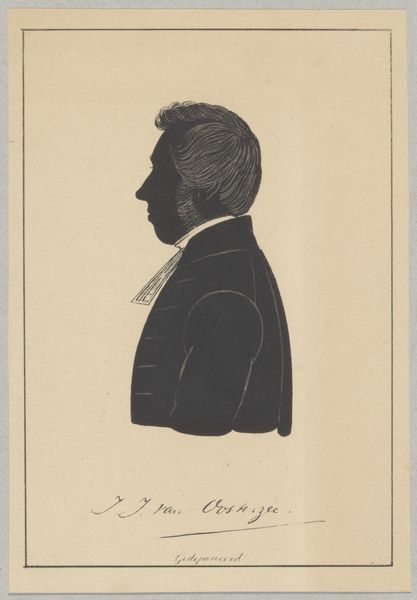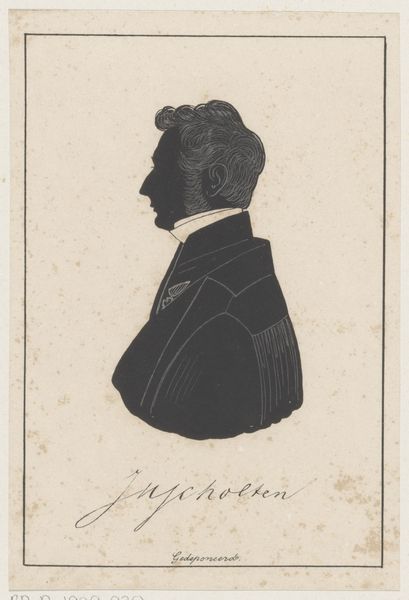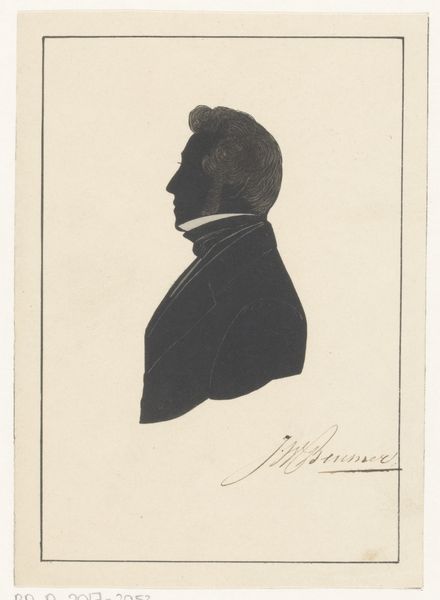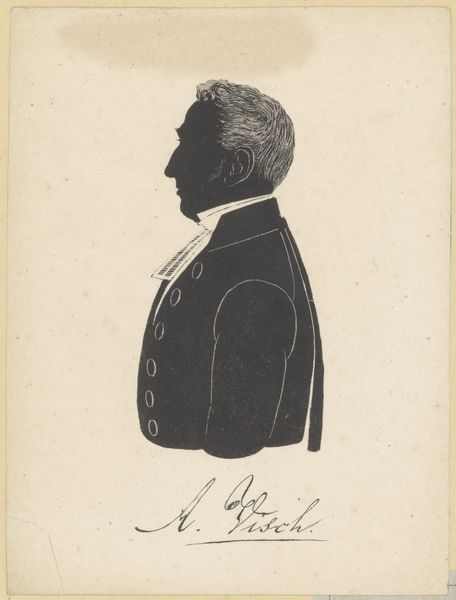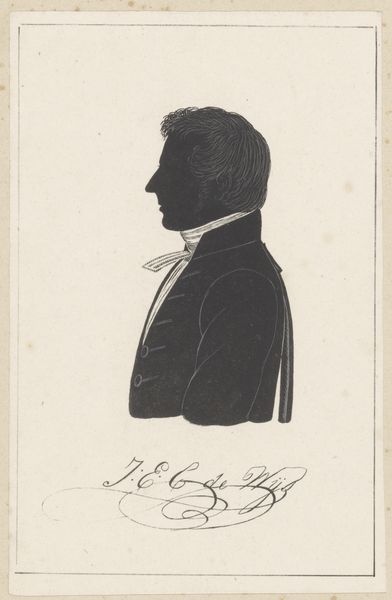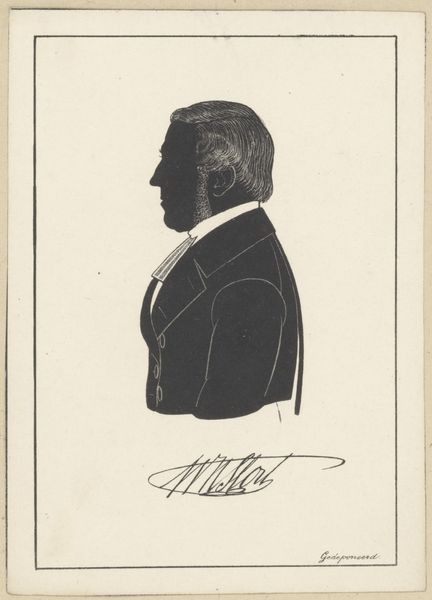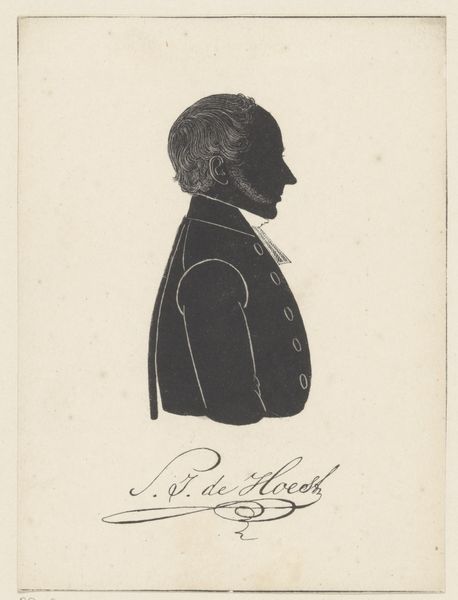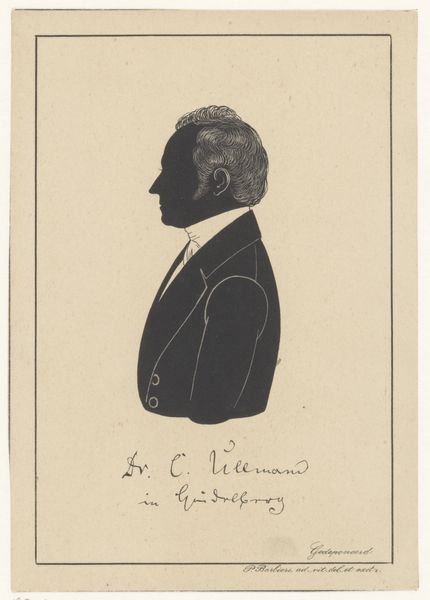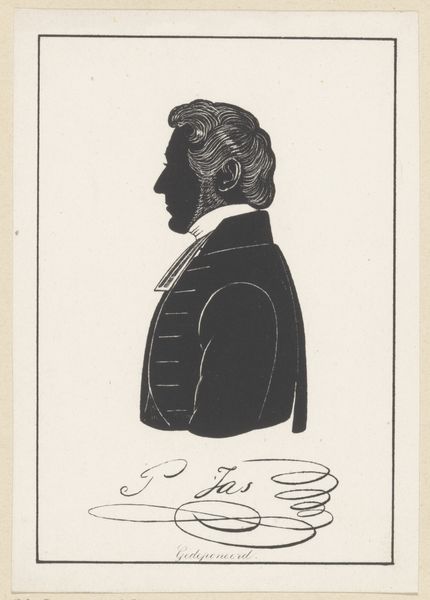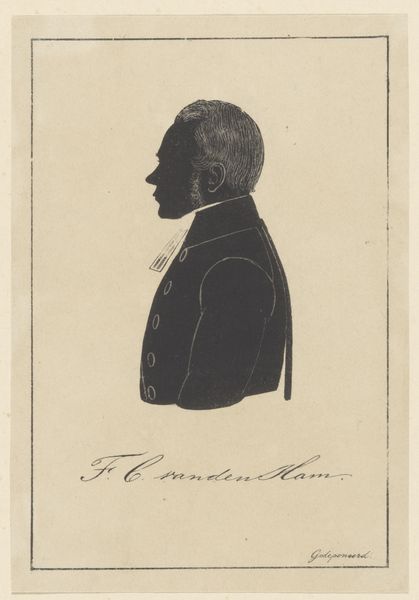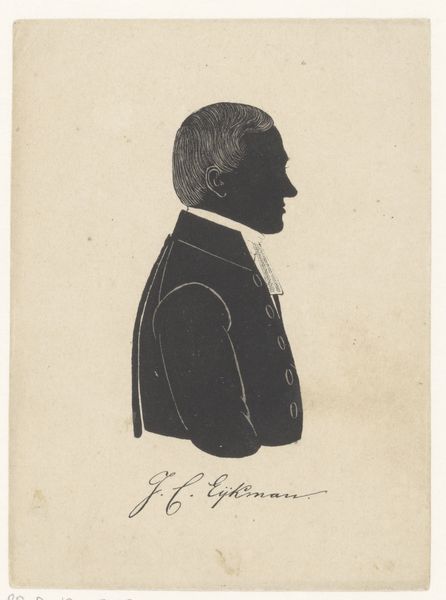
#
quirky illustration
#
childish illustration
#
shading to add clarity
#
old engraving style
#
cartoon sketch
#
personal sketchbook
#
ink drawing experimentation
#
ink colored
#
sketchbook drawing
#
cartoon style
Dimensions: height 150 mm, width 108 mm
Copyright: Rijks Museum: Open Domain
Curator: We're looking at "Silhouetportret van Abraham Diemont" attributed to Friedrich Heinrich Wilhelm Schröder, dating from around 1833 to 1870. Editor: It strikes me immediately with its stark elegance—the austerity of the black silhouette against the creamy paper. It’s wonderfully severe. Curator: The stark contrast really emphasizes the precise draftsmanship. Notice how the artist captures the textures of hair and the fall of the sitter's jacket just through subtle variations in the density of the silhouette. There is also an elegance created in the symmetry and repetition of triangles in the high-necked collar, buttons and hair. Editor: Precisely. What’s intriguing is thinking about the labour involved. Each delicate cut contributes to the overall impression, so the value placed on silhouette work reflects its inherent skill and patience, often regarded as "craft". Considering the time invested, I wonder about the economic standing of both the artist and subject of the artwork. Curator: That brings us to considering context. Silhouettes became incredibly popular as a relatively affordable way to have one's likeness captured, so it became something of an exercise in accessibility. Its reduction of form directs the eye to a reading of face and expression without additional context or color, which is fascinating from a semiotic point of view. Editor: Good point; this seemingly simple piece contains so much information about artistic traditions and social mobility of that period. I find myself increasingly interested in who precisely plied this trade – whose labour was seen as skilled or purely work, whose material conditions impacted the choices apparent in the artwork. Curator: And isn’t that duality what makes examining artwork so fascinating? Editor: Indeed. Looking closer really illuminates how seemingly straightforward art forms can provide layers of rich socio-historical understanding.
Comments
No comments
Be the first to comment and join the conversation on the ultimate creative platform.
